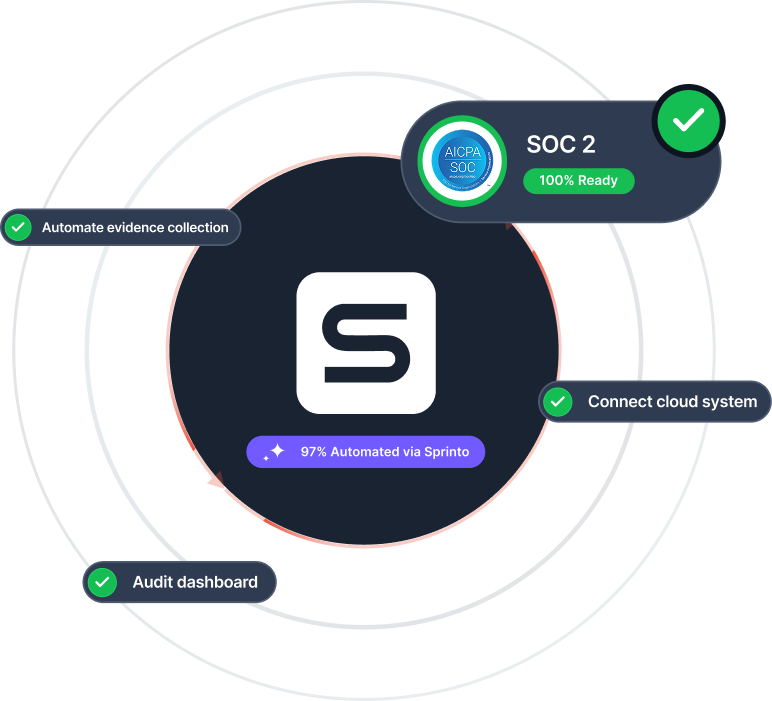Best Practices for SOC 2
Useful tools and resources
You can brute-force your way through SOC 2, but the smarter move is setting it up in a way that keeps working for you over time. That means focusing on sustainability, not just short-term audit prep.
Here are some best practices our team and customers swear by:
- Get leadership buy-in early: Make SOC 2 a company-wide priority, not just a side project for engineering or DevOps. Start from leadership, and get everyone aligned.
- Automate evidence collection wherever possible: Manually pulling logs and screenshots will eat up your team’s time. Use tools like Sprinto to pull from your actual systems (AWS, Okta, Google Workspace, etc.) in real time.
- Review access controls regularly: SOC 2 cares deeply about who has access to what. Review user roles, revoke stale access, and document changes, you’ll thank yourself later.
- Create a vendor management checklist: If you use third-party tools (and let’s face it, you do), make sure each one is tracked, risk-assessed, and has security documentation on file.
- Treat incidents like opportunities: If something goes wrong, it’s not just a fire to put out, it’s an opportunity to improve your response process and make your systems better. Document everything.
SOC Frameworks Overview
SOC 2 Basics
SOC 2 Compliance Process
SOC 2 Compliance Process
Sprinto: Your ally for all things compliance, risk, governance

